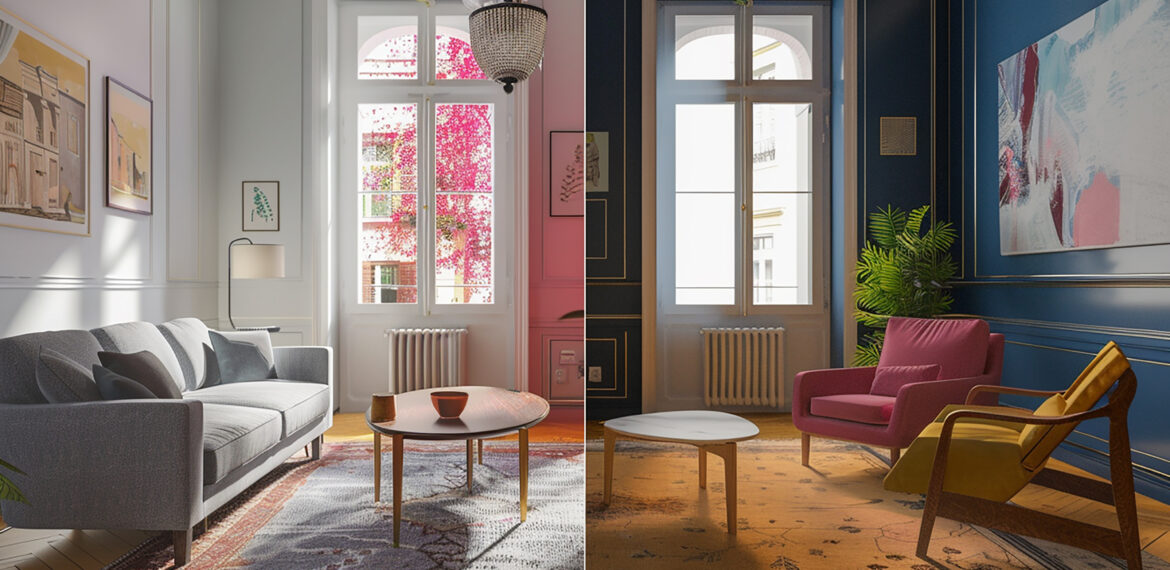When it comes to interior design, the terms modern and contemporary are often used
interchangeably. But in reality, they represent two distinct styles with unique characteristics.
Whether you’re decorating a new home, revamping a space, or simply curious about design
trends, understanding the difference between modern and contemporary design can help you
make better aesthetic decisions.
A. The Timeline: When Did It All Begin?
● Modern Design:
Modern design refers to a specific historical design movement. It emerged in the early to
mid-20th century, especially from the 1920s to 1950s, and is rooted in the Bauhaus and
Mid-Century Modern movements.
● Contemporary Design:
Contemporary means “of the moment.” It reflects current trends, styles, and aesthetics
that are popular right now. It evolves constantly and can include elements from various
design styles.
B Core Design Principles
● Modern Design:
○ Clean lines
○ Functional furniture
○ Minimal ornamentation
○ Natural materials like wood, leather, and stone
○ Neutral and earthy color palettes
● Contemporary Design:
○ Sleek and often minimalist
○ Embraces bold contrasts, curved lines, or artistic flair
○ Mixes materials (glass, metals, recycled materials)
○ More flexible with color—black, white, bold accents
3. Materials & Textures
● Modern:
Prioritizes natural materials—think teak wood, wool, linen, and leather.
● Contemporary:
Often incorporates metal, glass, concrete, plastic, and even sustainable materials. The
look is more industrial or high-gloss at times.
Conclusion
While they may look similar at a glance, modern and contemporary design have different roots,
philosophies, and aesthetics. Knowing the difference not only sharpens your design vocabulary
but helps you build a home that truly reflects your personality and the times.


